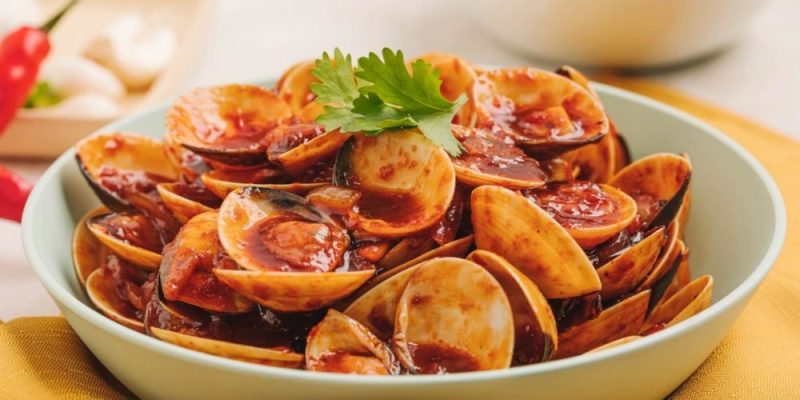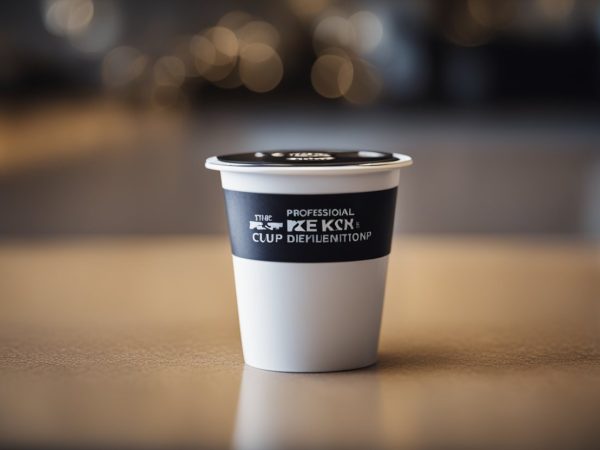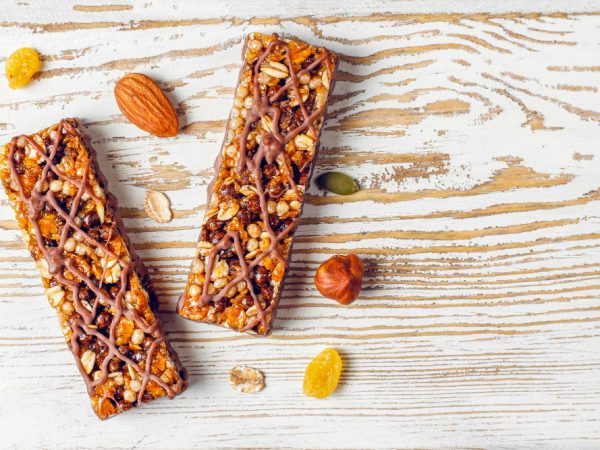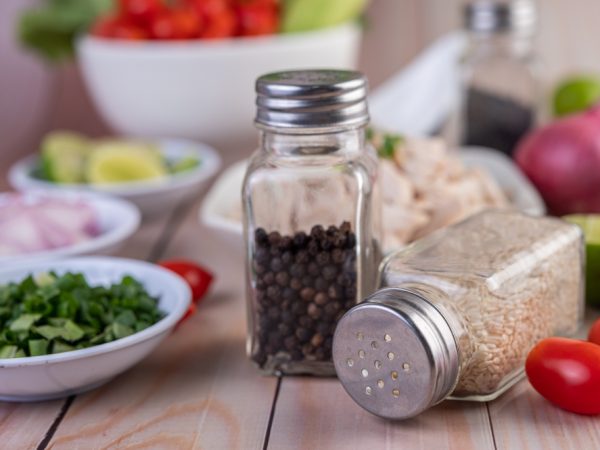Sambal Lala – Spicy, Savory Clams in Malaysian Style

Malaysia is a country celebrated for its vibrant and diverse culinary landscape. One of the most beloved and flavorful dishes to emerge from Malaysian seafood cuisine is Sambal Lala—a spicy, savory stir-fry of fresh clams coated in a rich sambal chili paste. Popular in home kitchens, seafood restaurants, and night markets across the nation, this dish is a celebration of bold flavors and local ingredients.
From its aromatic sambal base to the natural sweetness of lala (clams), Sambal Lala perfectly captures the Malaysian love for spice, seafood, and balanced flavors. This article explores everything you need to know about this iconic dish—from its ingredients and preparation to its place in Malaysian culture.
What Is Sambal Lala?
Sambal Lala is a popular Malaysian seafood dish made from lala (a type of short-neck clam) stir-fried in a spicy sambal chili paste. The sambal typically includes ingredients like dried chilies, garlic, shallots, belacan (fermented shrimp paste), tamarind, and sugar, creating a complex flavor that is spicy, umami-rich, slightly sweet, and tangy.
The dish is usually stir-fried over high heat, which helps the clams to open quickly and absorb the bold sambal flavors. Often served with steamed white rice, it’s a favorite among seafood lovers for its punchy, aromatic qualities.
Ingredients That Make It Special
While sambal lala seems simple, the ingredients are key to achieving its distinct taste. Here’s a breakdown of the main components that make this dish sing:
- Lala (Clams): These small, tender clams are the star. Freshness is critical—live lala ensures maximum sweetness and texture.
- Sambal Base: Made by blending and sautéing a mix of dried red chilies, shallots, garlic, and belacan. This base is sautéed until fragrant and slightly caramelized.
- Tamarind Juice or Asam Jawa: Adds tanginess that balances the heat and richness of the sambal.
- Sugar & Salt: To balance the heat with sweetness and enhance natural flavors.
- Optional Ingredients: Some versions include lemongrass, torch ginger flower (bunga kantan), or curry leaves to add extra fragrance.
Each ingredient is carefully chosen to build layers of flavor. The result is a dish that is deeply savory, fiery, and slightly sweet with a delightful briny finish.
How to Make Sambal Lala at Home
If you want to bring the magic of Sambal Lala into your own kitchen, it’s easier than you might think. Here’s a simplified home-style recipe:
Ingredients
- 500g lala (fresh clams), soaked and cleaned
- 10 dried chilies, soaked in hot water
- 5 shallots
- 3 cloves garlic
- 1 tsp belacan (toasted)
- 1 tbsp tamarind pulp mixed with 4 tbsp water
- 1 tbsp sugar
- Salt to taste
- 2 tbsp cooking oil
Instructions
- Clean the Lala: Soak in salted water for 30 minutes to purge sand. Rinse and drain.
- Prepare the Sambal: Blend soaked dried chilies, shallots, garlic, and belacan into a smooth paste.
- Sauté the Paste: Heat oil in a wok or pan. Add the sambal paste and cook on medium heat until fragrant and oil separates (~5–7 minutes).
- Add Tamarind & Seasonings: Stir in tamarind juice, sugar, and salt.
- Cook the Lala: Toss in the lala and stir-fry over high heat. Cook until all the clams open, around 4–5 minutes.
- Serve Hot: Garnish with cilantro or spring onions. Best eaten with steamed rice.
Note: Discard any clams that don’t open during cooking.
Regional Variations & Twists
Sambal Lala may be rooted in Malaysian cuisine, but regional preferences and creativity have given rise to various interpretations:
- Penang Style: Often spicier, sometimes includes bunga kantan and lemongrass.
- Malay Style: Heavier use of belacan and tamarind, resulting in a deeper umami punch.
- Chinese Malaysian Style: Slightly less spicy, sometimes includes a dash of Shaoxing wine or ginger.
- Fusion Versions: You’ll find sambal lala served over pasta or in wraps in modern Malaysian fusion restaurants.
These variations showcase the dish’s adaptability while still staying true to its core essence: fresh clams in bold, spicy sambal.
Where to Enjoy Sambal Lala in Malaysia
While you can make this dish at home, the best sambal lala experiences are often found in local eateries, especially:
Seafood Stalls and Hawker Centers
- Locations like Teluk Kumbar (Penang) and Port Klang (Selangor) are known for fresh, affordable sambal lala.
- Open-air seafood restaurants serve massive plates, perfect for sharing with family or friends.
Night Markets (Pasar Malam)
- Many pasar malam stalls specialize in hot sambal lala served in paper trays or on skewers.
- These versions tend to be spicier and made-to-order.
High-End Restaurants
- Upscale Malaysian or Peranakan restaurants may offer a refined version with artisan sambal and garnishes like fried shallots.
No matter the setting, the dish is almost always served steaming hot, sometimes with extra sambal on the side for those who like it blazing.
Health Benefits & Nutritional Value
While it’s indulgent in flavor, sambal lala can also be part of a healthy diet when prepared mindfully.
Health Benefits
- Clams are high in protein and low in fat.
- Rich in vitamin B12, iron, and omega-3 fatty acids, supporting heart and brain health.
- Chilies boost metabolism and contain antioxidants like capsaicin.
- Garlic and shallots offer anti-inflammatory and immune-boosting properties.
However, moderation is key, especially with the sodium content in sambal paste and belacan. For a healthier twist, you can reduce the oil and salt without sacrificing flavor.
Pairing Suggestions and Serving Ideas
Sambal Lala is versatile and can be enjoyed in various ways depending on the occasion:
- With Steamed Jasmine Rice: The traditional and best-loved pairing. The rice balances out the heat of the sambal.
- As a Side Dish: Complements dishes like grilled fish, kangkung belacan, or chicken rendang.
- In Seafood Platters: Combine with butter prawns, sotong goreng, and curry crab for a seafood feast.
- Noodle Toppings: Try sambal lala over a bowl of mee hoon or yee mee for a flavorful twist.
You can also use leftover sambal as a condiment or stir-fry base for vegetables and tofu.
Conclusion
Sambal Lala is more than just a seafood dish—it’s a fiery expression of Malaysia’s cultural love for spice, seafood, and bold flavors. With its perfectly balanced sambal paste and the natural sweetness of clams, it delivers a punchy, memorable taste in every bite.
Whether you enjoy it at a bustling street stall in Penang, a home-cooked family dinner, or a modern fusion café, sambal lala remains a dish that Malaysians of all backgrounds embrace with pride. Its ability to adapt, evolve, and delight makes it a must-try for both locals and travelers alike.
If you’re a fan of seafood and spicy food, then sambal lala is a dish that deserves a permanent spot on your culinary radar.
FAQs
1. What is “lala” in Sambal Lala?
“Lala” refers to short-neck clams, commonly found in Southeast Asia. They are known for their mild flavor and tender texture, making them ideal for stir-fries like sambal lala.
2. Is Sambal Lala very spicy?
It depends on the sambal used. Traditional sambal lala is moderately to highly spicy, but you can adjust the number of chilies to suit your preference when cooking at home.
3. Can I use frozen clams for Sambal Lala?
Yes, though fresh clams are preferred for the best flavor and texture. If using frozen clams, make sure they are properly thawed and cleaned before cooking.
4. Is Sambal Lala halal?
If made with halal-certified ingredients and without alcohol or non-halal additives, sambal lala can be fully halal. Always check when dining out.
5. How do I clean lala before cooking?
Soak the clams in salted water for 30–60 minutes to purge sand. Rinse under running water and scrub shells gently. Discard any that are cracked or do not close when tapped.










